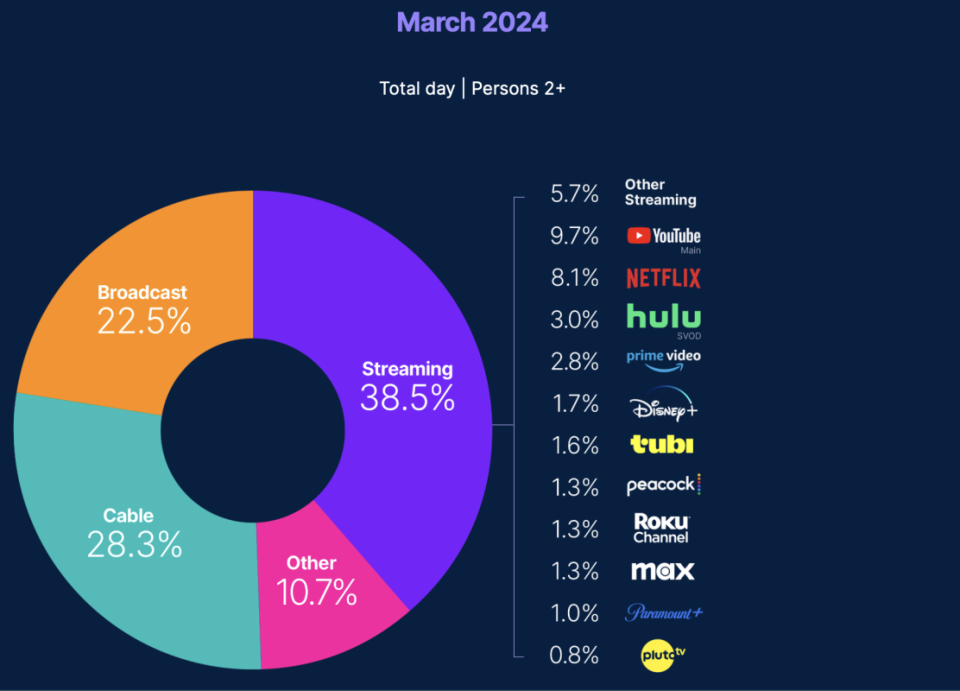YouTube Now Controls a Record Amount of the Total TV Market, Report Finds
With the proliferation of streaming services in recent years, many analysts have predicted a major shift in the world of TV consumption, with an existential threat to the longtime hold that broadcast and cable channels have had on the American public. A new report from Nielsen outlined just how much streaming's market share has grown.
According to Nielsen's monthly The Gauge report, during the month of March 2024, YouTube accounted for 9.7 percent of all television viewing, marking an increase of 0.4 percent from the month prior. This is a new record, as no other streaming platform has ever achieved this high of a number since The Gauge's reporting began in 2021. For the past 13 consecutive months, the popular video-viewing platform has had the largest share among streaming services, trailed by the likes of Netflix at 8.1 percent and Hulu's 3 percent. The growth of YouTube TV as an alternative to traditional cable might be partially responsible for this shift.
In total, streamers made up for 38.5 percent of all TV viewing in March, compared to 22.5 percent for broadcast and 28.3 percent for cable. While viewership for streaming fell 1 percent from February to March, cable saw a 0.7-point increase in viewing share in the same period. This can partially be attributed to the frenzy around March Madness and the simultaneous men's and women's NCAA basketball championships; the final game of the women's tournament set a new record for the highest number of viewers ever tuned in to a college basketball game. The president's State of the Union address also provided a bump for cable and broadcast viewership.

Nielsen
Broadcast continues to maintain a stable foothold in the world of TV consumption, while streaming's grasp is seemingly growing with every passing year. Cable, then, is apparently the biggest loser in this changing television landscape.

